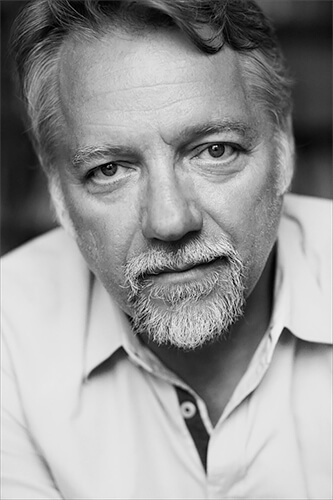Burtynsky was born in St. Catharines, Ontario. His parents had immigrated to Canada in 1951 from Ukraine and his father found work on the production line at the local General Motors plant. Burtynsky recalls playing by the Welland Canal and watching ships pass through the locks. When he was 11, his father purchased a darkroom, including cameras and instruction manuals, from a widow whose late husband practiced amateur photography. With his father, Burtynsky learned how to make black and white prints and together with his older sister established a small business taking portraits at the local Ukrainian center. In the early 1970s, Burtynsky found work in printing and he started night classes in photography, later enrolling at the Ryerson Polytechnical Institute.
From the mid-1970s to early 1980s, Burtynsky formally studied graphic arts and photography. He obtained a diploma in graphic arts from Niagara College in Welland, Ontario, in 1976, and a BAA in Photographic Arts (Media Studies Program) from Ryerson Polytechnical Institute in Toronto, Ontario, in 1982.
Burtynsky's most famous photographs are sweeping views of landscapes altered by industry: mine tailings, quarries, scrap piles. The grand, awe-inspiring beauty of his images is often in tension with the compromised environments they depict. He has made several excursions to China to photograph that country's industrial emergence, and construction of one of the world's largest engineering projects, the Three Gorges Dam.
His early influences include Ansel Adams, Edward Weston, Eadweard Muybridge, and Carleton Watkins, whose prints he saw at the Metropolitan Museum of Art in the early 1980s.
Most of Burtynsky's exhibited photography (pre 2007) was taken with a large format, field camera, on large 4×5-inch sheet film and developed into high-resolution, large-dimension prints of various sizes and editions ranging from 18 × 22 inches to 60 × 80 inches. He often positions himself at high-vantage points over the landscape using elevated platforms, the natural topography, and more currently helicopters and fixed-wing aircraft. Burtynsky describes the act of taking a photograph in terms of "The Contemplated Moment", evoking and in contrast to, "The Decisive Moment" of Henri Cartier-Bresson. He currently uses a high-resolution digital medium format camera.
Source: Wikipedia
Edward Burtynsky is known as one of Canada's most respected photographers. His remarkable photographic depictions of global industrial landscapes are included in the collections of over sixty major museums around the world, including the National Gallery of Canada, the Museum of Modern Art and the Guggenheim Museum in New York, the Reina Sofia Museum in Madrid, the Tate Modern in London, and the Los Angeles County Museum of Art in California.
Burtynsky was born in 1955 of Ukrainian heritage in St. Catharines, Ontario. He received his BAA in Photography/ Media Studies from Ryerson University in 1982, and in 1985 founded Toronto Image Works, a darkroom rental facility, custom photo laboratory, digital imaging and new media computer-training centre catering to all levels of Toronto's art community.
Early exposure to the sites and images of the General Motors plant in his hometown helped to formulate the development of his photographic work. His imagery explores the collective impact we as a species are having on the surface of the planet; an inspection of the human systems we've imposed onto natural landscapes.
Exhibitions include Water (2013) at the New Orleans Museum of Art & Contemporary Art Center, New Orleans, Louisiana (international touring exhibition); Oil (2009) at the Corcoran Gallery of Art in Washington D.C. (five-year international touring show), China (toured 2005 - 2008); Manufactured Landscapes at the National Gallery of Canada (touring from 2003 - 2005); and Breaking Ground produced by the Canadian Museum of Contemporary Photography (touring from 1988 - 1992). Burtynsky's visually compelling works are currently being exhibited in solo and group exhibitions across Canada, the United States, Europe and Asia.
As an active lecturer on photographic art, Burtynsky's speaking engagements have been held at the National Gallery of Canada, Ottawa; the Library of Congress in Washington, D.C.; George Eastman House in Rochester, NY; The Canadian Center for Architecture in Montreal; the Art Gallery of Ontario, the TED conference; and Idea City and Ryerson University in Toronto. His images appear in numerous periodicals each year including Canadian Art, Art in America, The Smithsonian Magazine, Harper's Magazine, Flash Art, Blind Spot, Art Forum, Saturday Night, National Geographic and the New York Times.
Burtynsky's distinctions include the TED Prize, the Governor General's Awards in Visual and Media Arts, The Outreach award at the Rencontres d'Arles, the Roloff Beny Book award, and the Rogers Best Canadian Film Award. He sits on the board of directors for CONTACT: Toronto's International Photography Festival, and The Ryerson Image Centre. In 2006 he was awarded the title of Officer of the Order of Canada and currently holds seven honorary doctorate degrees.
Burtynsky is represented by: Nicholas Metivier Gallery, Toronto; Paul Kuhn Gallery, Calgary; Art 45, Montreal; Howard Greenberg Gallery, and Bryce Wolkowitz Gallery, New York; Sundaram Tagore Gallery, Hong Kong & Singapore; Flowers, London; Galerie Springer, Berlin; Von Lintel Gallery, Los Angeles; and Weinstein Gallery, Minneapolis, Minnesota.
Source: www.edwardburtynsky.com
